<< Previous | Displaying results 5226-5250 of 6769 for "" | Next >>
Norman's grandchildren, Dustin, Aaron, and Michael. September 30, 1993. With the end of World War II and collapse of the Nazi regime, survivors of the Holocaust faced the daunting task of rebuilding their lives. With little in the way of financial resources and few, if any, surviving family members, most eventually emigrated from Europe to start their lives again. Between 1945 and 1952, more than 80,000 Holocaust survivors immigrated to the United States. Norman was one of them.
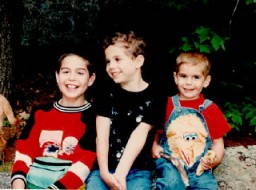
June 6, 1991, photograph showing Amalie and Norman Salsitz with a copy of their book, Against All Odds. With the end of World War II and collapse of the Nazi regime, survivors of the Holocaust faced the daunting task of rebuilding their lives. With little in the way of financial resources and few, if any, surviving family members, most eventually emigrated from Europe to start their lives again. Between 1945 and 1952, more than 80,000 Holocaust survivors immigrated to the United States. Norman was one of…
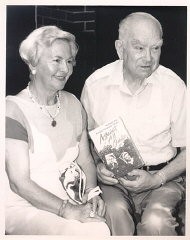
Norman's grandchildren, Michael, Dustin, and Aaron in 1997. With the end of World War II and collapse of the Nazi regime, survivors of the Holocaust faced the daunting task of rebuilding their lives. With little in the way of financial resources and few, if any, surviving family members, most eventually emigrated from Europe to start their lives again. Between 1945 and 1952, more than 80,000 Holocaust survivors immigrated to the United States. Norman was one of them.
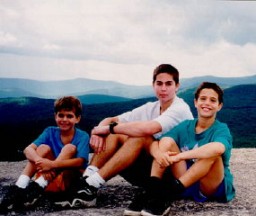
Norman Salsitz holds a photograph of himself and Amalie from 1945. 2004. With the end of World War II and collapse of the Nazi regime, survivors of the Holocaust faced the daunting task of rebuilding their lives. With little in the way of financial resources and few, if any, surviving family members, most eventually emigrated from Europe to start their lives again. Between 1945 and 1952, more than 80,000 Holocaust survivors immigrated to the United States. Norman was one of them.
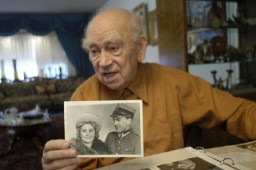
Norman Salsitz holds a photograph of his wife, Amalie, and daughter, Esther. 2004. With the end of World War II and collapse of the Nazi regime, survivors of the Holocaust faced the daunting task of rebuilding their lives. With little in the way of financial resources and few, if any, surviving family members, most eventually emigrated from Europe to start their lives again. Between 1945 and 1952, more than 80,000 Holocaust survivors immigrated to the United States. Norman was one of them.
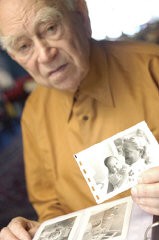
Born Naftali Saleschutz, Norman was the youngest of nine children in a devout Hasidic Jewish family. They lived in Kolbuszowa, Poland. In the Hasidic tradition, he wore a long black coat and shoulder-length earlocks. He first faced antisemitism in the second grade when his teacher cut one earlock off each Jewish boy.
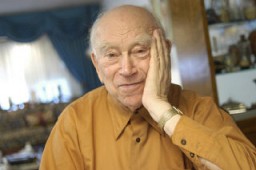
Norman Salsitz looks through his prewar family photographs. 2004. With the end of World War II and collapse of the Nazi regime, survivors of the Holocaust faced the daunting task of rebuilding their lives. With little in the way of financial resources and few, if any, surviving family members, most eventually emigrated from Europe to start their lives again. Between 1945 and 1952, more than 80,000 Holocaust survivors immigrated to the United States. Norman was one of them.
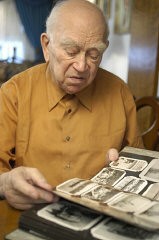
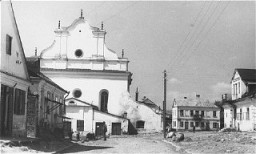
Aron Derman while he was with Polish partisans in 1944. In this photograph, Aron wears a fur hat that he made and boots that he finished himself (he found them in the ghetto, unfinished, and sewed them up). Lisa Nussbaum was also a member of the partisans. Aron recounted that for a short while, Lisa was in charge of 200 women. Photograph taken in 1944, in a partisan base in the Naroch forest.
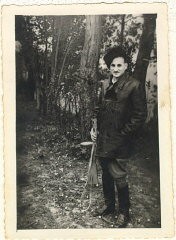
Aron in Budapest, 1945, while en route from Poland to Italy with Brihah, moving to Palestine. In Aron's words: "We got connected with the Brihah in Poland, got directions to go to Bratislava and on to Budapest. On our trip, we didn't know where we going from city to city, only our final destination." July 5, 1945, Budapest, Hungary.
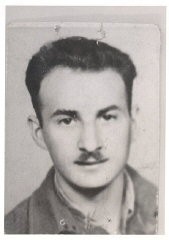
Portrait of Aron's family on his mother's side, taken when Aron's cousin moved to Israel in 1933-1934. Aron is seated second from left, bottom row. His mother, Miriam, is in the center row, second from right. Aron's father is behind her and to her right. Aron himself was 8 or 9 years old when this picture was taken in either May or June. At the time, Aron recalled, "I was thinking about going to summer camp." Slonim, Poland, 1933-1934.

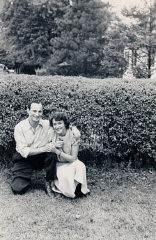
Lisa Nussbaum and her family. From left to right: Pola (sister), Herschel (father), Borushek (brother) Gittel (mother), and Lisa (about 13 years old in this photograph). Lisa's father exported geese to Germany for a living. Photograph taken in Raczki, Poland, ca. 1939. With the end of World War II and collapse of the Nazi regime, survivors of the Holocaust faced the daunting task of rebuilding their lives. With little in the way of financial resources and few, if any, surviving family members, most…
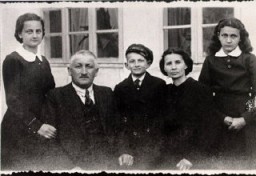
Tadek Soroka (right), a Pole who helped Aron and Lisa escape from Poland. This photograph was sent to the Dermans after the war. Date and place unknown.
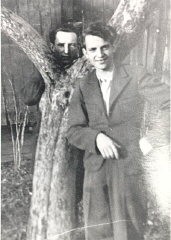
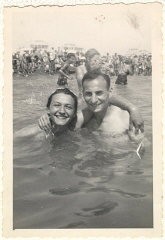
Aron and Lisa when they came to America. Photograph probably taken in Chicago, Illinois, 1947.

Lisa wearing the first suit she bought in America (Aron recollected that it was taupe). Lisa's aunt, Faye Abrams, gave her the money to buy this suit. Photograph taken in 1947 in Chicago, Illinois, at the Illinois Central station, 75th street (Lisa was either coming or going from downtown).
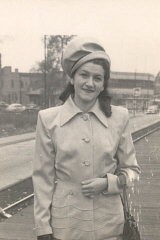
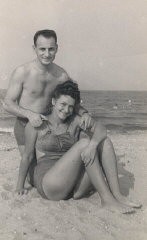
Aron and Lisa's firstborn child, Howard. Chicago, Illinois, 1949.
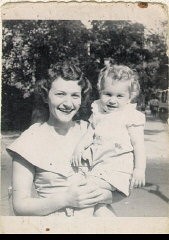
Aron and Lisa's three sons (Howard, Gordon, and Daniel) at the middle son's graduation from the University of Wisconsin. Madison, Wisconsin, ca. 1972.
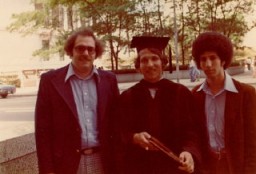
Aron standing in Howard's men's clothing store (named for his eldest son) at 9125 Commercial Avenue in Chicago. He opened the store in 1949 and owned it for 30 years. Chicago, Illinois, early 1970s.
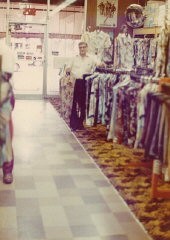
Aron standing in Howard's men's clothing store (named for his eldest son) at 9125 Commercial Avenue in Chicago. He opened the store in 1949 and owned it for 30 years. Chicago, Illinois, early 1970s.
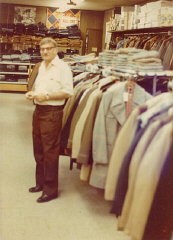
Aron in Teaneck, New Jersey, in the early 1970s. This photograph was taken by Hyman Alpert, known as "Trigger." Alpert, a cousin of Aron's, was a musician with the Glenn Miller Orchestra. Alpert went on to become a photographer in Teaneck.
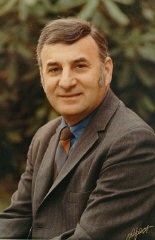
Aron and Lisa with Tadek Soroka, the Pole who helped them escape, on the occasion of Soroka's recognition as a "Righteous among the nations" by Yad Vashem. Jerusalem, Israel, 1983.
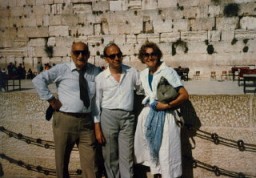
Lisa and Aron (center) with their three sons, Gordon, Howard, and Daniel. Photograph probably taken in Chicago, Illinois, in 1990.
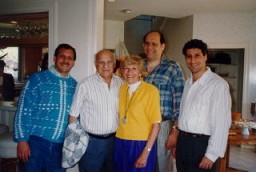
We would like to thank Crown Family Philanthropies, Abe and Ida Cooper Foundation, the Claims Conference, EVZ, and BMF for supporting the ongoing work to create content and resources for the Holocaust Encyclopedia. View the list of donor acknowledgement.